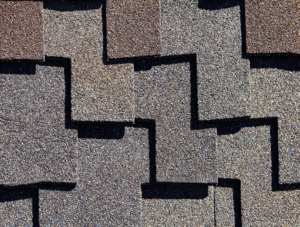Shingle Granule Loss – What it Means
 Maybe it’s after a hail storm, or maybe it’s just part of your run-off, but seeing shingle granules accumulate in your rain gutters can be distressing. While it can be cause for concern, shingle granule loss can signal a few different problems with your roof.
Maybe it’s after a hail storm, or maybe it’s just part of your run-off, but seeing shingle granules accumulate in your rain gutters can be distressing. While it can be cause for concern, shingle granule loss can signal a few different problems with your roof.
While your shingles are largely made of asphalt, it’s a material that isn’t particularly resilient to the elements. Because of this, manufacturers extend shingle life by placing mineral granules in a layer on top of the shingle. This layer protects the asphalt below from harmful ultraviolet rays from the sun as well as the general fluctuations in weather.
While it’s a perfectly normal part of roofing’s wear-and-tear to lose some granules over time, your roof shouldn’t be shedding them regularly. If it is, it’s a sign of shingle damage that could be caused by many factors:
- Poor attic ventilation: A poorly vented attic can collect condensation, which causes wood roofing materials to expand and contract more with the elements. This movement can reduce the lifespan of asphalt shingles, causing them to lose granules.
- Foot traffic: Asphalt shingles aren’t deck materials, and aren’t designed to be walked on frequently. Unusual amounts of foot traffic on a roof can dislodge granules, particularly in exteme temperatures.
- Hail damage: Shingle granule loss is often a symptom of weather damage. Shingles battered by hail and wind flex, shift and lose shingles. Granule loss is a classic symptom of hail damage.
- Old age: Your shingles take a lot of abuse. A summer storm can swing their surface temperature from searing in the sun to chilly in the rain. Those temperature fluctuations cause expansion and contractions of the shingles, causing deterioration.
Once you start seeing significant shingle granule loss, it’s only a matter of time before your roof starts leaking, leading to potentially significant damages to your house’s structure. Call B&M Roofing of Colorado for a free estimate at 303.443.6843 or use our Estimate Request Form to get started.




































